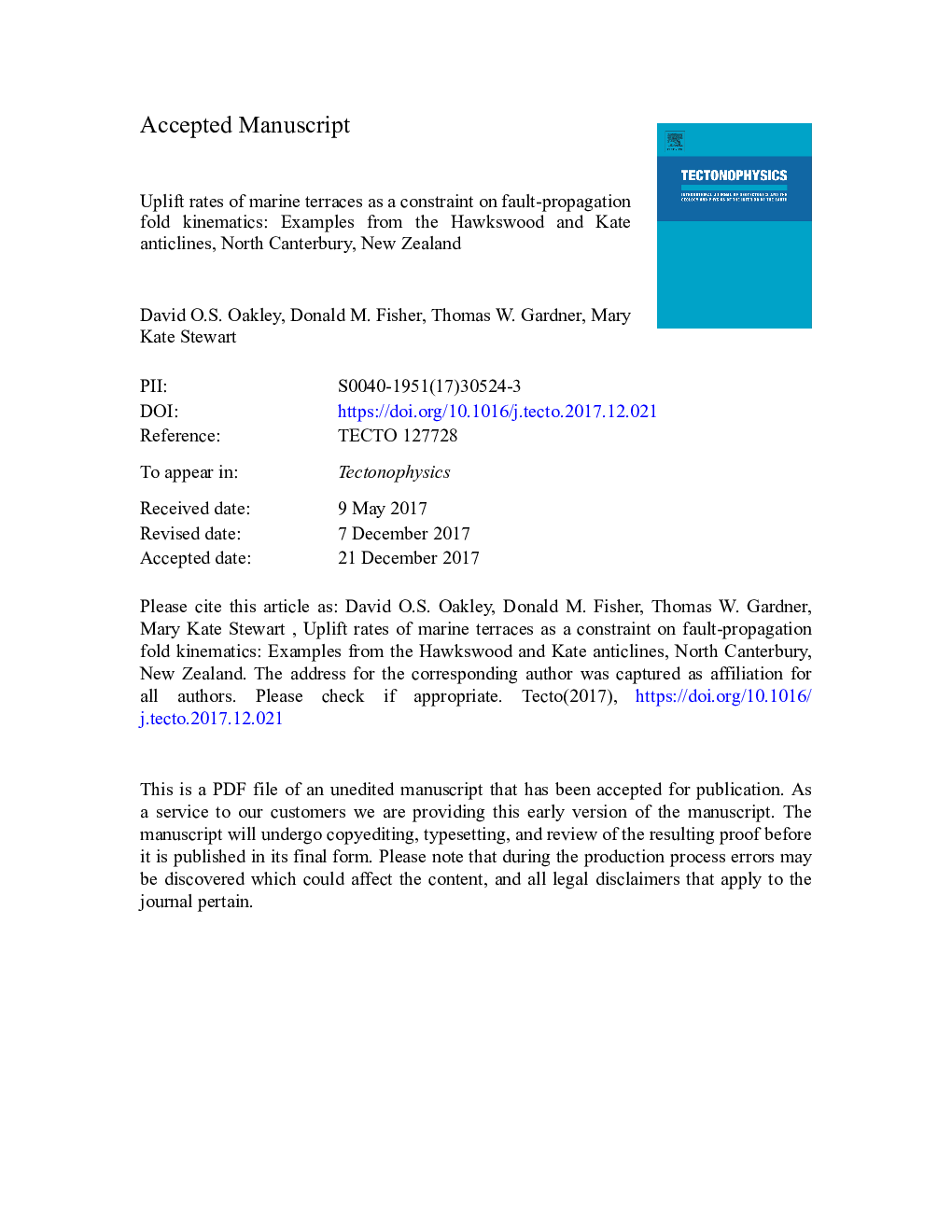| Article ID | Journal | Published Year | Pages | File Type |
|---|---|---|---|---|
| 8908772 | Tectonophysics | 2018 | 92 Pages |
Abstract
Marine terraces on growing fault-propagation folds provide valuable insight into the relationship between fold kinematics and uplift rates, providing a means to distinguish among otherwise non-unique kinematic model solutions. Here, we investigate this relationship at two locations in North Canterbury, New Zealand: the Kate anticline and Haumuri Bluff, at the northern end of the Hawkswood anticline. At both locations, we calculate uplift rates of previously dated marine terraces, using DGPS surveys to estimate terrace inner edge elevations. We then use Markov chain Monte Carlo methods to fit fault-propagation fold kinematic models to structural geologic data, and we incorporate marine terrace uplift into the models as an additional constraint. At Haumuri Bluff, we find that marine terraces, when restored to originally horizontal surfaces, can help to eliminate certain trishear models that would fit the geologic data alone. At Kate anticline, we compare uplift rates at different structural positions and find that the spatial pattern of uplift rates is more consistent with trishear than with a parallel-fault propagation fold kink-band model. Finally, we use our model results to compute new estimates for fault slip rates (~Â 1-2Â m/ka at Kate anticline and 1-4Â m/ka at Haumuri Bluff) and ages of the folds (~Â 1Â Ma), which are consistent with previous estimates for the onset of folding in this region. These results are consistent with previous work on the age of onset of folding in this region, provide revised estimates of fault slip rates necessary to understand the seismic hazard posed by these faults, and demonstrate the value of incorporating marine terraces in inverse fold kinematic models as a means to distinguish among non-unique solutions.
Related Topics
Physical Sciences and Engineering
Earth and Planetary Sciences
Earth-Surface Processes
Authors
David O.S. Oakley, Donald M. Fisher, Thomas W. Gardner, Mary Kate Stewart,
